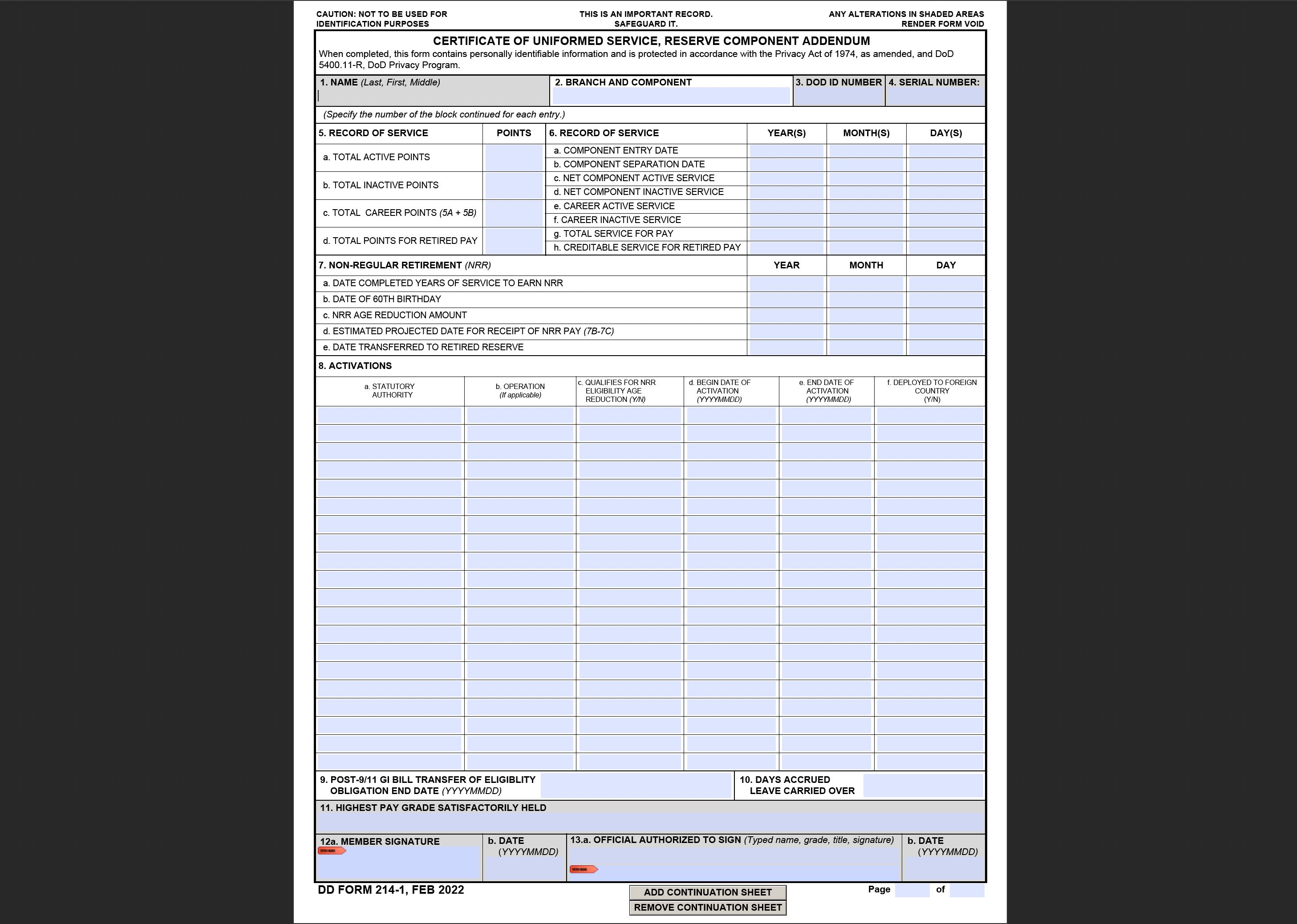Troops across the National Guard and reserve components of all military branches will see a standardized discharge form by 2025, according to a Defense Department instruction released earlier this month.
After the new policy goes into effect, members will receive the new DD Form 214-1 when they retire or separate from one of the military’s reserve components. Currently, each service has its own reserve component separation form, such as the NGB 22 or the NAVPERS 1070/615.
Groups representing reserve component troops, including the Reserve Organization of America and the National Guard Association of the U.S., have long advocated for the change.
The new form comes after the fiscal 2020 defense policy bill directed DoD to study if it could standardize the forms.

The hodgepodge of separation forms sometimes posed problems for reserve component troops when trying to access veterans benefits, explained J.C. Cardinale, personnel legislative affairs manager for NGAUS.
Part-time troops are typically only issued regular DD-214s when they complete an active duty tour of 90 or more days. Before the Global War on Terrorism drastically increased the pace of reserve component deployments, some troops could go their entire careers — and even retire — without earning one at any point after their initial training.
Cardinale, who is also an Army Reserve officer, described one case in which a retired part-time colonel died, but the Veterans Affairs administration initially did not recognize his NGB 22 as a proper source for the rank to put on his headstone, instead wanting to use his captain rank from his most recent DD-214. They rectified the error in time for the funeral, but it required additional legwork for the officer’s widow.
“This is a ‘good governance’ kind of change,” Cardinale told Army Times in a phone interview. “It’s going to ensure that every service member gets every benefit that they are owed, for the least amount of bureaucratic pain or time to get those benefits.”
Cardinale said the new form will show when a retiring service member is eligible to start collecting their non-regular retired pay, which a member can’t receive until age 60 without qualifying service. Previously, retired service members were responsible for tracking this date and doing the math themselves so they’d know when to submit their request to turn on their retirement pay and benefits.
But those calculations are complicated, because different types of deployments count at different rates towards early retirement pay and benefits depending on when they were, where they were, and what statutory mobilization authority the orders were under.
The retirement pay eligibility date will be plainly stated on the new DD-214-1, taking the guesswork out of it for troops.
Pending legislation may do even more
While DoD mulled the new policy, Congress had been preparing to force the military to make the change.
Pending bipartisan legislation in the House of Representatives would take the policy a step further, though.
If H.R.7041 is passed, it will require the military to issue a new DD-214 (or DD-214-1) at various checkpoints in a service member’s career, according to an online summary of the bill.
Those points would include when someone transfers between states, as well as at each promotion once a member reaches O-3, W-3 or E-4.
Cardinale said those checkpoints are especially important because “a Guardsman or reservist is essentially a currently serving veteran” due to their dual civilian and military lives.
He argues that even the proposed legislation isn’t enough, though.
The NGAUS official hopes to someday see “digital, on-demand DD-214s,” similar to how members can log in and instantly download their paystubs from MyPay.
Editor’s note: The author of this article, Davis Winkie, is an associate member of the Reserve Organization of America and a member of NGAUS.
Davis Winkie covers the Army for Military Times. He studied history at Vanderbilt and UNC-Chapel Hill, and served five years in the Army Guard. His investigations earned the Society of Professional Journalists' 2023 Sunshine Award and consecutive Military Reporters and Editors honors, among others. Davis was also a 2022 Livingston Awards finalist.




